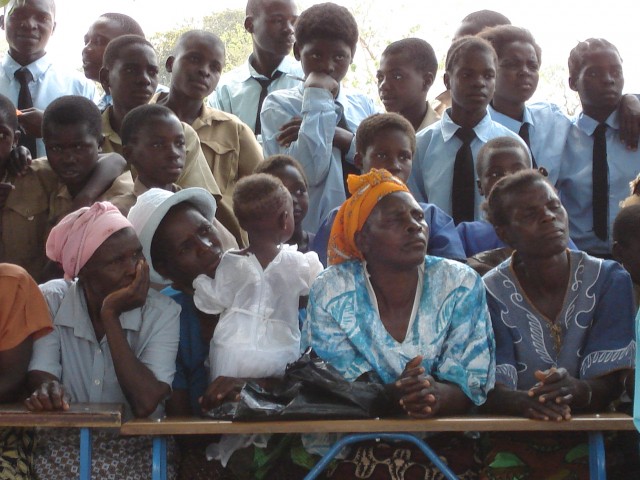
What Brigitte Syamalevwe noticed most of all about the beeswax chamber we stood inside was the fragrance coming from the gold colored walls. Her observation of the contemporary art installation was that it smelled milky and of honey, and comforting like a mother’s embrace.
The Wolfgang Laib exhibit at the Hirshhorn Gallery had been on Brigitte’s list of things to see while she visited Washington, D.C. in December of 2000 to participate in International AIDS Day. At 42 years old, Brigitte had already emerged from the urban Copperbelt region of Zambia as a pioneer in HIV prevention because of her courage and vision organizing grassroots campaigns to empower women and slow the spread of HIV and AIDS in Africa.
When Brigitte had tested positive for HIV in the late 1990s—after a decade of counseling local young women about HIV prevention—part of her response was to sit with her husband, to whom she had always been faithful, and ask together why this thing had come to them.
Together they explored what about their married relationship led him to pursue extramarital sexual relations. Together they questioned what about their culture had led her to be so passive as a wife, not asking for open conversation about power, sex and condoms in their marriage.
“Instead of giving in to the disease, Brigitte saw it as an opportunity,” the Guardian wrote of her. “She silenced a meeting in the Zambian capital Lusaka, where people were proclaiming that HIV only affected the poor and ill- educated, with a public declaration that she too – a respected teacher and mother, and not young – was infected.”
Her husband tested positive for HIV, and together they began a counseling campaign with sponsorship from their Catholic Diocese to help other married couples explore power dynamics within Zambian marriages that made women especially vulnerable to HIV and AIDS.
They met in their home, and eventually the homes of other church members. The counseling groups they started were open to any couple that wanted to participate, up to five couples at one time in a single counseling circle.
The only requirement for participation was that each couple had to commit in turn to create an additional counseling circle for an additional five couples. In this way Brigitte and her husband initiated an ongoing ripple of counseling and support for hundreds of people in the Zambian Copperbelt who otherwise might have remained silent about the virus and the disease.
Brigitte’s experience standing publicly to confront HIV and AIDS ensured she was spotted by UNICEF and the U.S. Agency for International Development (USAID) in Lusaka as an inspired visionary in the fight against HIV and AIDS.
In 2000, as a USAID staff member in in the Africa Bureau who specialized in support to the USAID/Zambia education office, I worked with other HIV prevention staff at USAID to incorporate HIV prevention and mitigation into education, economic growth and agriculture programs. For us, Brigitte provided a model for us to draw attention to and help replicate.
I also personally advocated to support Brigitte’s 2000 International AIDS Day trip to Washington, D.C. It was there that the Honorable Andrew Young, marking the occasion at St. John’s Church across from the White House, referred to her as the Rosa Parks of the HIV and AIDS prevention movement.
Brigitte died of complications related to AIDS in 2003, but her legacy lives on in the many people inspired by her work. Among them are the development professionals serving on the UNAIDS Inter-Agency Task Team (IATT) for HIV and Education, led by UNESCO, of which I am a founding member and former Chair.
I—like many others—remember and revisit the work of heroes like Brigitte, whose legacy from decades of HIV prevention continue to help me now in my role at Creative Associates International, updating strategies that have proved successful in the past, and deserve to be carried forward.